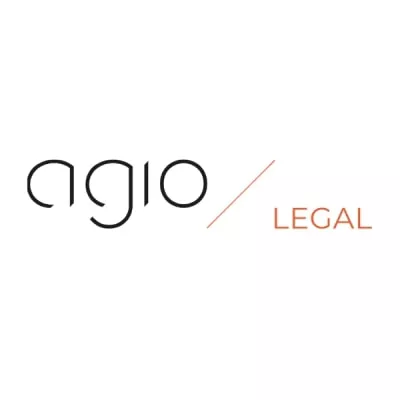Abstract
This is a summary of the article "Bescherming van video games naar Belgisch recht: een analyse van het auteursrecht en bedrijfsgeheimen aan de hand van de Zuid-Koreaanse Nexon-Ironmace zaak", which we authored and was published in Dutch by Computerrecht, the only Belgian-Dutch journal of computer science and law (edition 5/2023).
The article examined the extent to which Belgian video game developers can rely on copyright and trade secret laws. Based on two sub-questions, the article sought to provide an adequate answer to the extent of this protection for the right holder. The first sub-question focused on the regime applicable to copyright infringement of a video game and its elements. Here, the protection of the graphical user interface, the audiovisual images, the purchased video game elements, and the game concept under the criticized unitary and distributive approach were examined. The second sub-question focused on the methods of proving such copyright infringement. The synergistic effect of trade secrets was also further examined in this context. Based on a discussion of trade secret laws and the South Korean Nexon vs. Ironmace case, this article concluded with some practical recommendations that Belgian video game developers can follow or implement to protect their intellectual property.
- Introduction
In the world of video games, various art forms converge to form a unique amalgam of audiovisual splendor. Like literary works, they contain profound stories that draw players into adventures. Sounds are carefully composed to enhance emotions, while graphics stimulate the imagination and immerse players in beautiful virtual worlds. But above all, video games themselves are works of art. They transcend traditional boundaries of expression and allow us to participate in an interactive and immersive experience. However, as complex technological creations, they also bring with them a series of legal challenges and questions, particularly in the area of intellectual property protection.
In late March 2023, the video game Dark and Darker, at the time the number one most-played video game on the digital distribution platform Steam, was removed from the platform due to a DMCA takedown notice. Ironmace, the South Korean developer and distributor of the video game, was accused by global video game giant Nexon of both theft of trade secrets and copyright infringement. Nexon alleged that the source code, audio-visual and other materials of their Project P3 - hereafter referred to as P3 - were copied by two former employees. The employees had essentially turned P3 into Dark and Darker in order to exploit this video game as intellectual property of the new company.
In April 2023, following its DMCA takedown notice, Nexon filed a petition in a U.S. federal court for an injunction aimed at the continued distribution of the video game and a claim for damages. The claim has since been declared inadmissible by the U.S. court on the principle of forum non conveniens. A lawsuit is currently pending on parallel grounds in the district court in Suwon, South Korea.
- NCsoft-Bluehole (2007-2012) vs. Nexon-Ironmace (2021-...)
The Nexon vs. Ironmace case, which involved violation of trade secrets by employees stealing data from their (former) employer to develop and distribute their own video game, shows similarities to the NCsoft vs. Bluehole case. In 2007, employees left South Korean video game company NCsoft because of allegedly poor working conditions. Following this, they founded Bluehole, where they launched a new video game called Tera. In response, NCsoft filed a complaint in the South Korean court alleging that during the firing process, trade secrets from their canceled video game called Lineage 3 were stolen. After discovering the copying practices, the employees involved in both cases were fired. They then set up their own company with the help of former employees of the affected company.
The former NCsoft employees and Bluehole were convicted criminally and civilly, respectively, for theft of trade secrets. An injunction based on theft of trade secrets (and not their incorporation into the video game) could not prevent the distribution of the video game. On appeal, it was held that Bluehole's convicted employees had indeed violated trade secrets and they were ordered to remove all relevant data. Despite the conviction on appeal, Bluehole could nevertheless distribute Tera in the South Korean market subject to the removal of the relevant data.
- Copyright
Navigating the intricate landscape of a computer game, which involves diverse elements subject to various copyright qualifications, poses a challenging task in the application of copyright law. Like countless other multimedia works, video games are characterized by the fusion of traditional copyrighted elements and software components. Video game developers must comply with both the general rules of copyright law and the specific regulations governing computer programs. However, there are no specific provisions that could serve as guidelines for the concrete application of these regulations.
3.1 Applicable regime: general copyright protection regime vs. lex specialis copyright protection of computer programs
The criteria for protection and infringement in copyright law are closely linked, with infringement occurring when copied elements are considered original intellectual creations of the author. In applying copyright to video games, there is a distinction between the general copyright protection regime and the lex specialis of copyright protection of computer programs, with the boundary between the two regimes being determined by the nature of the elements. The lex specialis application of Title 6 Book XI WER for computer programs does not automatically cover all aspects of a video game. Protection is limited to the "manner of expression, in whatever form" of the computer program. The CJEU, in the BSA case, defines the boundary for expressing a computer program. In a video game, the graphical user interface aids player control and decision-making, but additional graphical elements, like information bars or mini-maps, are excluded from lex specialis copyright protection. Only those software components enabling the user to intervene in the program and use if for the purpose for which it was designed, namely a de facto-reproduction of the program itself, would fall under the lex specialis copyright protection regime of computer programs.
Some legal doctrine extends this analysis to other elements of video games. Thus, when confronted with a computer program, one must distinguish the components of the program whose reproduction allows the program to be used for the purpose for which it was developed. Under this approach, other aspects of a video game, such as the images generated during a game, do not fall under the lex specialis regime of computer programs. Indeed, replicating these images can never be equated with replicating the entire computer game. After all, the reproduced images do not allow the user to actively intervene in the progress of the game. Original elements of a video game that fall outside the specific legal framework of computer programs - such as the images, sounds, texts, characters - may nevertheless be eligible for copyright protection. Indeed, establishing the general or lex specialis copyright regime does not affect the condition of originality, as the CJEU interprets these requirements uniformly for all forms of copyright. It is important to note that differing copyright protection regimes can result in the application of distinct rules, such as those concerning moral rights and employee creations.
3.2 Copyright protection of purchased video game assets on a marketplace
A relatively recent practice in video game development which could be clarified in the Ironmace vs. Nexon-case involves selecting purchased video game assets through a publicly available marketplace like the Unreal Engine Marketplace. This online platform allows game developers to buy ready-made assets, saving on development costs. For instance, if a game requires a 3D werewolf character, a developer can either create an animated 3D model from scratch or purchase an existing model from the Unreal Engine Marketplace. Ironmace argues that assets populating the world of Dark and Darker, such as enemies, chests, and animations, fall into the public domain since they were acquired through the Unreal Engine Marketplace and, therefore, are not copyright-protected. Nexon counters this by referring to Article 17 U.S.C. § 101 of the US Copyright Act, which grants protection to a work "resulting from the collection and assembling of pre-existing material or data selected, coordinated, or arranged in such a way that the resulting work as a whole constitutes an original work of authorship." In the Infopaq judgment, the CJEU held that a work enjoys copyright protection if the author, by his choice, sequence and combination of previously known material or work, expresses his creativity in an original way and achieves a result that is his own intellectual creation. If a cumulative effect of partial reproductions results in the reconstruction of long fragments that reflect the originality of the work in question, this will result in a copyright infringement, such as the right of reproduction. In the context of purchased copyright-protected elements in a video game, the article suggests that a cumulative effect can lead to the reconstruction of successive images and scenarios of an audiovisual work, reflecting the originality of the work and expressing the intellectual creation of the author.
3.3 Proof of copyright infringement in Belgium
The legal doctrine has developed an evidentiary method for determining whether there is a derivation, and thus infringement, from an older copyrighted work. According to this method, there can only be a derivation from an older work by a younger work to the extent that the younger work has copied, imitated, adapted, borrowed or taken over elements and this creates similarities between the two original works. Nevertheless, most legal scholars posit that once similarities between two original works are established, considering the level of creative decision-making involved, the legal presumption arises that the younger work has reproduced the older one, leading to a infringement in such instances. The originality requirement of elements in a video game can thus be demonstrated on the one hand on the basis of a legal presumption by auditive, visual and structural similarities and on the other hand with proof of copy, imitation, use or borrowing. Consequently, the article argues that proof of the latter can be supported by evidence of trade secret infringement.
- Protection of trade secrets
In certain situations, the intellectual property of a video game may not only be protected by copyright, but may also enjoy additional protection under trade secret laws. Unlike copyright law, which specifically targets literary or artistic works, trade secrets do not require that the information be of a particular type, but rather that it be secret, have commercial value and reasonable measures have been taken to keep it secret.
Protection of trade secrets in the context of video games includes technical and commercial information, such as source code, software, in-game objects and licensing terms, during both the development process and within the game itself. Once a video game is commercialized, however, disclosed information such as gameplay elements loses trade secret status, while information such as source code and algorithms remain protected.
The scope of protection of trade secrets differs significantly from intellectual property rights because trade secrets do not grant exclusive rights to the holder. Infringement of trade secrets can occur when someone unlawfully acquires, uses or discloses information without authorization, with knowledge of its unlawful origin. The holder of a trade secret can take legal action for infringement, and courts have various measures available, such as prohibiting the use or production of infringing goods. Infringing goods are those whose design, features, operation or production process take substantial advantage of illegally obtained trade secrets. The exact interpretation of "substantial benefit" has yet to be determined by national courts, but economic benefits, such as time and cost efficiency in developing a video game, may serve as criteria.
- Conclusion and practical recommendations
The article examined the extent to which Belgian video game developers can invoke copyright law and trade secret law. On the basis of two sub-questions, the article sought to provide an adequate answer to the extent of this protection for the rightsholder. The first sub-question focused on the regime applicable to copyright infringement of a video game and its elements. In copyright law, the criteria for protection and infringement are closely intertwined. When a younger work adopts elements that constitute the author's own intellectual creation of an older work, infringement occurs.
The second sub-question focused on the methods of proving copyright infringement. Proof of copyright infringement can be provided in two ways. The requirement of originality of elements in a video game can be proven, on the one hand, by a legal presumption by providing evidence of auditory, visual and structural similarities and, on the other hand, by evidence of copy, imitation, use or borrowing. Given this latter evidentiary method of borrowing from an older copyrighted work, a certain degree of cross-fertilization between copyright law and trade secret law is imminent.
Although gamers and fans of Dark and Darker have access to the video game due to the termination of the DMCA takedown notice, it will be interesting to see whether copyright and trade secret laws were infringed in the Nexon vs. Ironmace case. However, video game developers should not wait for this decision to protect their intellectual property. After all, literary and artistic works can enjoy additional protection under the trade secret regime in addition to copyright during video game development. Belgian video game developers can implement a number of measures to enjoy the complementary levels of protection. These measures include legal measures (e.g., contractual confidentiality obligations with abstract and concrete descriptions of confidential information), physical security mechanisms (e.g., safes and clean desk policies), virtual security measures (e.g., data security on servers) and organizational measures (e.g., access management and a register of creations).
Copyright and trade secrets complement each other thanks to their overlapping protection and synergistic effects in the area of providing evidence, indicating how the application of both regimes can form a combined protection strategy for intellectual property of video game developers.
The content of this article is intended to provide a general guide to the subject matter. Specialist advice should be sought about your specific circumstances.


